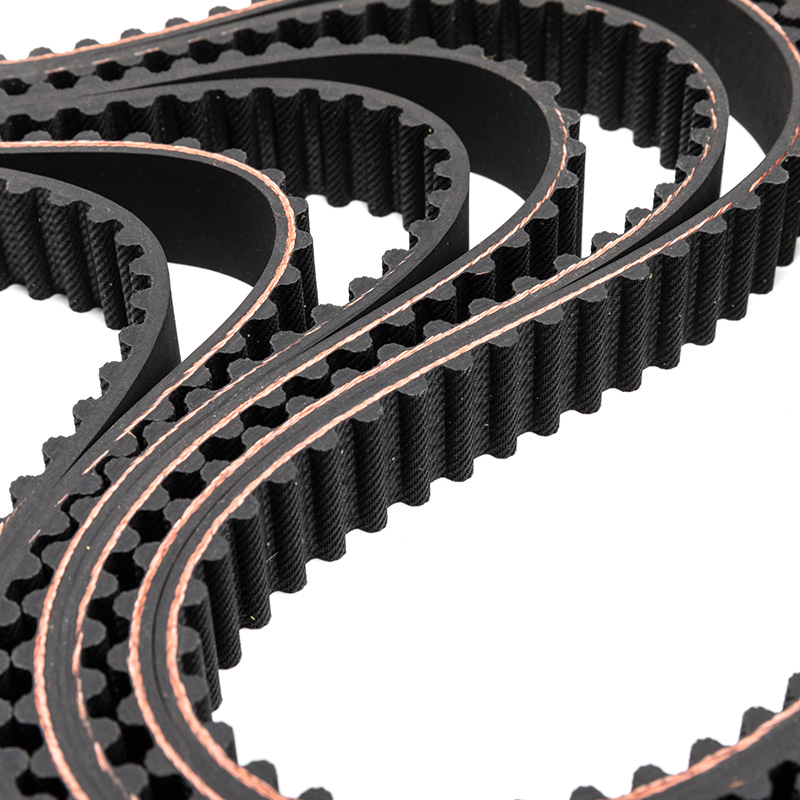HNBR (Hydrogenated Nitrile Butadiene Rubber) rubber is known for its excellent performance in addressing challenges related to extreme temperatures and weather conditions in automotive timing belt applications. Here are several ways in which HNBR rubber provides solutions to these challenges:
High-Temperature Stability: The exceptional high-temperature stability of HNBR rubber originates from its unique molecular structure achieved through hydrogenation. This structural fortification empowers HNBR to resist thermal degradation, ensuring that the timing belt remains robust and functional in the intense heat generated within an engine compartment. The saturation of the polymer chains prevents the detrimental effects of heat, such as chain scission and cross-linking, contributing to the material's ability to endure prolonged exposure to high temperatures.
Resistance to Thermal Aging and Oxidation: HNBR rubber's resistance to thermal aging and oxidation is a testament to its advanced molecular design. The hydrogenation process imparts a remarkable ability to resist the formation of free radicals and degradation of polymer chains, preserving the material's mechanical properties over time. In the context of automotive timing belts, subject to continuous thermal cycling, this resistance ensures longevity and sustained performance, crucial for engines operating under demanding conditions.
Cold Weather Flexibility: The copolymerization of butadiene in HNBR not only enhances its cold weather flexibility but does so in a way that maintains resilience and elasticity even in sub-zero temperatures. This is a pivotal attribute for automotive timing belts, especially during cold starts or in regions with harsh winter climates. HNBR's ability to remain pliable in cold conditions prevents the risk of cracking or loss of functionality, contributing to the reliability of the timing belt in diverse weather scenarios.
Resistance to Ozone and UV Exposure: HNBR's resilience against ozone and UV exposure underscores its molecular stability. Ozone and UV radiation, prevalent in outdoor environments, can initiate the degradation of conventional rubber materials. HNBR's unique composition shields against the formation of microcracks, maintaining the structural integrity of the timing belt. This resistance is particularly critical for belts exposed to prolonged sunlight and various weather conditions, ensuring sustained performance and longevity.
Chemical Resistance: The selective hydrogenation process not only enhances HNBR's resistance to heat but also imparts remarkable resistance to oils, fuels, and other engine fluids. In the intricate environment of an engine compartment, where timing belts are exposed to a variety of chemical agents, HNBR's chemical resistance prevents premature deterioration. This property is integral to the longevity and reliability of the timing belt, ensuring it retains its structural integrity despite constant exposure to potentially corrosive fluids.
Weather Sealing Properties: HNBR rubber's resistance to moisture and humidity significantly augments its weather sealing properties. Effective sealing is paramount in protecting the internal components of the timing belt system from water ingress, which could lead to corrosion and reduced performance. HNBR's capacity to maintain a reliable seal, even in variable weather conditions, adds a layer of protection to the timing belt, contributing to its overall robustness and longevity.
Enhanced Wear Resistance: HNBR rubber's superior wear resistance is a result of its intricate molecular structure, allowing it to withstand the mechanical stresses and abrasion typically encountered in automotive timing belt applications. The molecular fortification enables HNBR to endure continuous movement, varying loads, and potential abrasive interactions. This enhanced wear resistance directly translates to an extended service life, providing reliability and longevity even in harsh weather conditions where the timing belt may be subjected to increased mechanical stress.
Hnbr Rubber Automotive Timing Belts


 View More >>
View More >>
 View More >>
View More >>
 View More >>
View More >>
 View More >>
View More >>
 View More >>
View More >>
 View More >>
View More >>
 View More >>
View More >>
 View More >>
View More >>
 View More >>
View More >>
 View More >>
View More >>
 View More >>
View More >>
 View More >>
View More >>